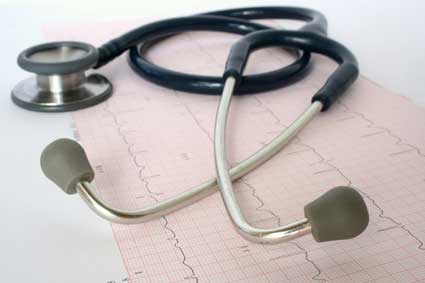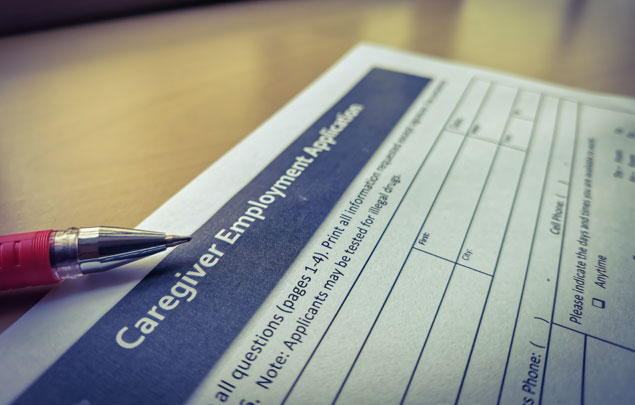Introduction
Understanding all the terms, and specific functions of the body aren't always easy. Neither is understanding the process of diabetes. However, any diabetic should understand the basic definition of glucose; what it does, and how it affects the body. With this knowledge, you can understand and manage your diabetic condition much easier. While we'll try not to get too terribly technical with terminology and definitions in this article, we will strive to educate you on the basics of glucose and its most important function in regulating your body functions.
What Is Glucose and Why Is It Important?
The scientific definition of glucose is a monosaccharide or simple sugar. This simple sugar is very important to your body and its biology. Glucose is the source of energy for your body and serves to regulate and mediate metabolism. In other words, your levels of glucose determine how your body utilizes energy for fuel.
The word glucose originally comes from the Greek word "glykys" which means sweet. The "ose" ending designates a sugar. For example, many sugars are found in the body and come from the foods we eat including glucose, fructose, sucrose, and so forth. The endings on these words designate that they're a type of sugar.
Glucose is not only used as fuel for your body, helping you to perform an exercise workout, walk up a flight of stairs, or carry groceries into the house, but serve as a source of fuel for chemical reactions and interactions between cells, tissues and organs in the body.
The amount of glucose in your blood determines how efficiently (or not) your body is able to utilize these sugars. The main source of glucose is carbohydrates. Carbohydrates are generally known as starchy foods.
Glucose must be paired with a hormone known as insulin in order to most efficiently function in the body. Glucose enters the body's cells with insulin. Imagine insulin as a horse bearing a soldier (glucose) into a cellular structure, such as an imaginary fort. Without the horse, the glucose can't travel.
Monitoring Blood Glucose Levels
There are several different ways an individual can test their blood glucose levels throughout the day. Four of the most common methods include:
- Two-hour postprandial blood sugar
- Fasting blood sugar (FBS)
- Oral
- Random blood sugar (RBS)
The two-hour postprandial blood sugar test measures the level of your blood sugar two hours after you've begun a meal. This testing method is easy, though sometimes inconvenient for individuals performing their own blood testing, as it requires you to keep an eye on the clock and may interfere with other daily activities and responsibilities.
The oral glucose tolerance test is often used as a diagnostic tool to determine pre- diabetic or diabetic conditions. A person is required to drink a liquid that contains glucose prior to the test. This test is often performed during pregnancy where women are suspected of having gestational diabetes. This test is not commonly utilized on individuals who aren't pregnant.
Certain stipulations and requirements should be followed for each type of test. For example, someone taking a fasting blood sugar test shouldn't eat or drink for a minimum of 8 hours before blood samples are taken. You can drink water, but nothing else. Individuals already diagnosed with diabetes who are undergoing a fasting blood sugar test for regular maintenance may be told to wait until after the blood is tested before you can take your dose of insulin. For this reason, it's often easiest to schedule your blood draws and appointments as early in the morning as possible.
The two-hour postprandial blood sugar test should be obtained exactly 2 hours after starting your meal. This test is done at home, with common equipment such as glucose monitors and testing strips.
Blood glucose results may differ depending on the type of test that has been performed. Some glucose levels can be read immediately on a glucose monitor, while blood plasma values taken at a doctor's office may generally be ready within 1 to 2 hours. Below is a table of the type of test as well as normal ranges of blood glucose for each one.
Normal Blood Glucose Levels
Fasting Blood Glucose
70-99 mg/dL
2-hour postprandial
70-145 mg/dL
Random blood sugar testing
70-125 mg/dL
Certain factors may affect test results, including stress, illness, caffeine, or even smoking a cigarette beforehand. Alcohol will also affect the blood sugar levels in your blood. Eating or drinking any fluids or foods within 8 hours of the fasting blood test or in less than 2 hours before the two-hour postprandial test will also adversely affect results.
Here are a few additional facts that you should know about glucose:
- The blood glucose level will increase after you eat.
- Insulin or orally taken diabetic medication can help reduce your blood glucose level.
- Blood glucose levels generally rise when an individual is stressed.
- Regular and carefully monitored exercise may help reduce blood glucose levels.
- Your blood glucose level may rise if you're sick.
Discuss activity levels, diet and stress factors in your life with your doctor if you have been diagnosed with a pre-diabetic or diabetic condition. Every individual reacts to diabetic conditions differently, depending on the circumstances and the type of diabetes with which you've been diagnosed.
Interested in learning more? Why not take an online Diabetes course?You may need to try several different methods of exercise, frequency, and intensity to determine the right combination for you. The same goes with your diet. Food will affect your blood glucose level, especially your intake of carbohydrates.
For example, your blood sugar may rise after you've eaten carrots or sweet potatoes, or you may experience different symptoms as well as blood sugar levels after eating ice cream or something as innocent as mashed potatoes. Time and experience will determine how your body reacts to certain types of carbohydrates. Little by little, you will learn to adapt your diet according to how your body reacts to the foods you eat. Dietitians and medical professionals will offer guidance and counseling regarding your nutritional food intake, and monitor you carefully.
If you need to take insulin to help regulate your blood glucose levels, your doctor may need to experiment a little with the dosage in order determine just the right amount that will help keep your blood sugar regulated. Any individual diagnosed with diabetes needs to maintain a fairly even balance between the amount of glucose in the body and the amount of insulin that's given. If you give yourself too much insulin, your blood glucose levels may rise too fast or they may drop to alarming levels. If you don't get enough insulin, glucose levels may accumulate in the blood, leading to problems.
Timing is very important for a diabetic. Time, patience and a modicum of experimentation will help you manage and control your diabetes to suit your current lifestyle. However, there are cases where emergencies occur, and knowing what to do in the event of emergencies will help you take better care of yourself and your health.
-
Emergencies
Diabetics need to take very good care of themselves. An emergency may develop if you don't pay attention to what your body is telling you. For example, if you have diabetes, you should call your doctor or get immediate medical attention under the following circumstances:
- Your blood glucose levels are over 250 mg per deciliter even though you're taking insulin
- If your blood glucose levels are 250 mg per deciliter or higher for more than 24 hours for pre-meal blood glucose testing if you're taking oral diabetic medication with Type Two diabetes
- You're sick for more than two days without any sign of improvement
- You've experienced diarrhea or vomiting for more than six hours
- Your urine contains large amounts of ketones
- You experience extreme dry mouth or experience a fruity odor to your breath, confusion, dehydration or disorientation
- You feel sleepier than usual
- You're experiencing any difficulty breathing, or chest or stomach pain
Conclusion
Diabetics naturally learn to pay close attention to their body. With experience and time, you'll notice when something doesn't seem quite right. Eventually, you'll be able to time your meals, blood glucose tests and insulin injections or oral medications to blend as fully as possible with your current lifestyle and living habits.
Keeping a log of your blood glucose levels, your insulin doses or pills, and any other medications you have on a daily basis will help you monitor and manage your condition as well as provide background that your doctor may use to alter your dosages or manage your diabetes.
Basic Diabetic Tools
Introduction
After you've been diagnosed with diabetes, you must consistently monitor your blood sugar levels. Basic tools and equipment will be necessary for this, and you will need adequate supplies to prevent any interruptions in care or for monitoring your condition. In this article, we'll cover the basics of what types of tools you may need to monitor your condition. This list is by no means inclusive and may be added to depending on your doctor's guidelines and instructions as well as your condition.
Testing, Testing, Testing
When you have diabetes, you must check your blood glucose levels daily, and sometimes, several times a day. Self-monitoring your blood glucose levels gives you a certain control over your condition that will help you make adjustments throughout the day, which will have a direct impact on how you feel. In order to measure your blood glucose, you'll need basic equipment. You'll also need to determine a testing schedule, based on your condition and your doctor's guidance and advice.
Some people may only need to test once a day in the morning. Others may test before and after every meal of the day, or up to eight times during the morning, the afternoon and the evening.
Individuals who have recently been diagnosed with diabetes may need to test their blood sugar levels more frequently until they become accustomed to proper diet, exercise, and activity levels and gauge how their own body reacts to each.
In general, individuals diagnosed with Type One diabetes may need to test more frequently than those with Type Two diabetes, as the first type will require you to adjust your insulin according to your blood glucose levels. Individuals who experience widely differing blood sugar levels on a daily basis may also need to test more frequently until they get their condition under control. This may be facilitated by keeping a daily diabetes log so that you can write down your readings before and after meals every day of the week, as directed by your doctor.
The expense of diabetic tools for testing varies widely. In some cases, older individuals on Medicaid will be able to get reimbursement for some of their costs. Private insurance may also help with some costs. Discuss testing equipment and tools with your doctor as well as your insurance providers to make sure you understand coverage, cap limitations, and the cost of and necessity of all your tools and supplies.Glucose Monitors
A glucose monitor is a necessary tool for diabetes management. Blood glucose monitors come in a variety of models and brands, and your doctor may suggest one model or type over another. If the choice is up to you, choose a monitor that has an easy to read digital display panel. Any blood glucose monitors should offer consistent results, depending on your current condition. The most common features of blood glucose monitors include:
- A display panel
- Audio beepers or functions to let you know when the blood test strip is done and a reading is available.
- Battery compartment - blood glucose monitors are battery operated, so ensure that you always have spare batteries on hand. Some models come equipped with a special tone or alert when a battery is running low.
- Slot for test strips - blood-testing strips are inserted into a special slot in the glucose meter. Some models come with enclosed testing strip cartridges, which automatically feed into the blood glucose monitor as they're used. This is a convenient and user-friendly function in many newer models.
Some blood glucose monitors offer extra functions such as audio readout with vision complications, and some offer panel backlighting to read in near dark conditions. Some even offer computer support software.
Some new models of blood glucose meters also administer insulin dosage depending on your blood glucose level. Talk to your doctor about such models to determine whether you're a good candidate for this type of delivery system.
Testing Strips
Test strips are a common accessory required for blood glucose testing. An individual pricks their finger with a special lancet. This lancet is a small, fine, sharp needle-type instrument that creates a small prick in the skin. A drop of blood from this prick in placed on the blood test strip.
Lancets come in different gauges, or thicknesses. Because you'll need to prick your fingers up to several times a day, choose the finest lancet you can and always use a different finger when pricking. Most lancets are spring loaded, so when you place them against the skin and press, the needle pokes the skin at a predetermined depth. The entire process unfolds as follows:
-
Clean the finger with alcohol, using an alcohol wipe or cotton ball.
-
After your finger is dry, prick the tip of your finger with the lancet.
-
Allow a drop of blood to form.
- Place a drop of blood on the tip of the testing strip.
- Insert the testing strip into the glucose monitor.
- The monitor will measure the glucose levels present in the blood drop and will then display the results on the screen as either milligrams per deciliter (mg/dL) or mmol/l (millimoles per liter) readings.
Syringes
Syringes, which many people call hypodermic needles, are used to inject predetermined amounts of insulin into your body. Syringes are available for purchase from your local drugstore or medical supply store, and require a prescription, as does your insulin, which we'll talk about next. Whenever possible, ask your pharmacist to give you the finest needles possible to suit your condition and syringe size and dosage.
You'll also need what is called a "sharps container" in which you dispose of your used syringes. This container is red and prevents finger sticks and accidents when handling used syringes and needles. It also protects others in the home or elsewhere from finger sticks and contamination. Sharps containers offer one-way disposal of syringes and needles and can be placed in cupboards, at the end of a counter, or other location for easy disposal.
Syringes come in sizes that range from 30 to 100 units, and may be designated as 3/10 mL/cc to 1 mL/cc. Choose a syringe that has the easy to see numbers so that you can accurately draw the exact amount of insulin that your doctor has specified.
In some cases, you may be able to purchase an insulin pen, which offers individuals cartridges containing pre-measured amounts of insulin. These pens are offered in reusable, disposable, or one-use types. Cartridges may be purchased separately.
Insulin pens are extremely convenient for individuals uncertain about drawing their own insulin out of a refrigerated vial of insulin, and those who are afraid of injecting themselves with a needle. The tip of the "pen" is placed directly onto the skin and a button on the top end is pushed. Insulin is automatically injected into the skin without you having to physically insert a needle into your skin.
Other types of syringes offer a jet-injection type device that uses pressure to insert insulin through the skin. Jet injection devices such as this can be quite pricey (ranging up to $600) while syringes and insulin pens are more moderately priced.
Your doctor or nurse will physically show you how to properly draw insulin from a vial and will show you proper administration of the insulin. Your skin may be sensitive at first, and you may experience some jitters when injecting yourself or a loved one with insulin, but you'll soon grow used to it.
Insulin pumps are also available, which automatically dispense insulin through catheters inserted into the skin. Insulin pumps offer short-acting insulin and are designed to offer a continuous and slow infusion of insulin into the body through a catheter most commonly inserted into the abdomen. The pump is about the size of a cassette tape and can be carried in a pocket or hooked to a belt.
Insulin pumps are not recommended for everyone, and offer both pros and cons for use. Talk to your doctor about the potential of insulin pumps, or other and modern technological advances in regarding types of insulin and insulin delivery systems.
Insulin - Types and Storage
The type of insulin you require will be determined by your doctor. There are many different types of insulin; rapid acting, short-term, regular, premixed, and long acting. Some of the most common types of insulin include:
- Humalog (lispro)
- Novolog (asoart)
- Humulin R
- Novolin L
- Humulin U
- Humalog 75/25 (pre-mixed)
- Novolin 70/30 (pre-mixed)
Dosage will also be determined by your blood glucose readings and your doctor's instructions. Longer acting insulin is good for 24 hours, while others have a peak action of 1 hour to 90 minutes following the injections and coincide with the point in time that sugar levels are the highest after eating.
You may need to experiment in dosage and type, with instructions and perhaps even changes in prescription by your doctor until the appropriate mix of insulin or appropriate action insulin is determined to meet your needs.
The dosage will also depend on the type of action your insulin provides, and will depend on when you are directed to take it. Your doctor will carefully explain insulin dosage as well as dietary requirements and timing for the best results for your condition.
Most types of insulin must be refrigerated, although some can be left at room temperature. Follow instructions provided by the manufacturer to determine specific storage requirements of your insulin. When traveling, place insulin in dry ice or place a small icebox in an insulated lunch pack or bag. If traveling my plane, ask your flight attendant to place insulin in the on-board refrigerator. Be prepared to show a prescription at flight check-in for carrying syringes, insulin pens, and the refrigerated insulin.
Paying For It All
In some cases, your private medical insurance provider or Medicare may pay for part or all of your diabetic supplies. Consumers should know that diabetic insulin pumps can cost around $5,000, plus supplies. Medicare generally covers the cost of insulin pumps but patients must meet stringent guidelines in order to qualify for reimbursement. Talk to your doctor or private health insurance carrier to determine their guidelines and requirements for reimbursement.
Costs of syringes, needles, lancets, alcohol swabs, and glucose monitors may be reimbursed under Medicare Part B. The cost of insulin is covered when used with an external insulin pump, but insulin that is injected through a syringe as well as some diabetic drugs taken orally may be covered under Part D Medicare, covering prescription drug coverage. Be prepared to pay 20% of all Medicare approved amounts after your yearly Part B deductible has been paid.
































